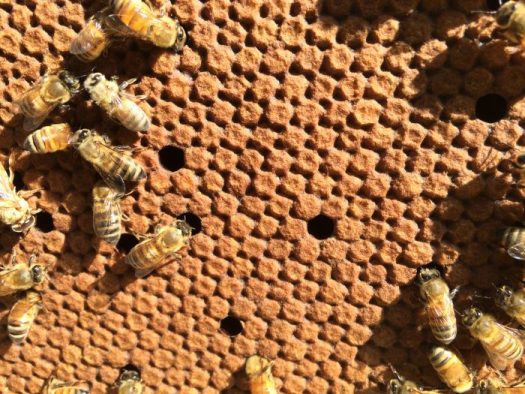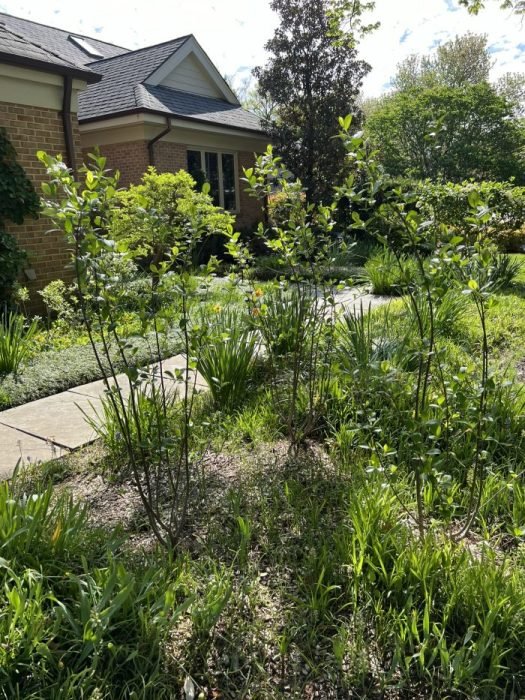Keeping honey bee hives means you will likely encounter swarms, bees that have separated from a mother colony. A natural reproduction process, swarming can happen to any beekeeper, so be prepared when it happens. It is a sight to behold when the swarm is in full flight. Swarming season is usually in April and May here in the Mid-Atlantic, when bees are rapidly stocking up on all the available nectar. Swarms can appear suddenly and you must be prepared to move them within a few hours or they will begin to move to another area. At the end of this post, I’ll show you step by step how a swarm forms as I set them up in a new hive.
This swarm has gathered on a low branch of an arborvitae tree.
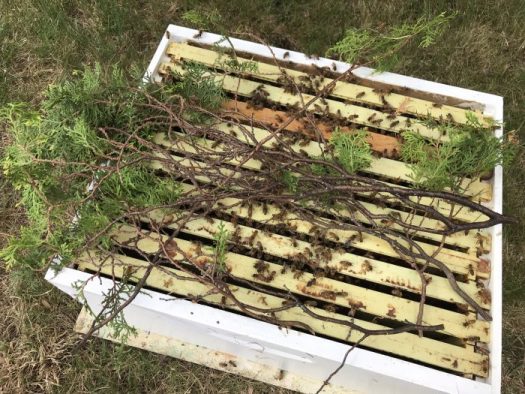
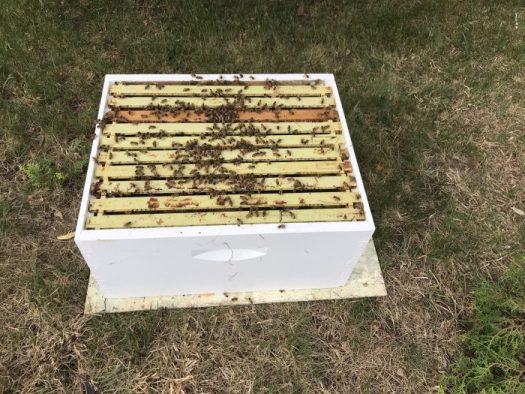
Having beehives on my property, in the spring I am always listening for the dull roar of a swarm gathering and flying away. The buzzing of the bees can be heard about 100 feet away and they leave in an impressive wave that bursts from the hive.
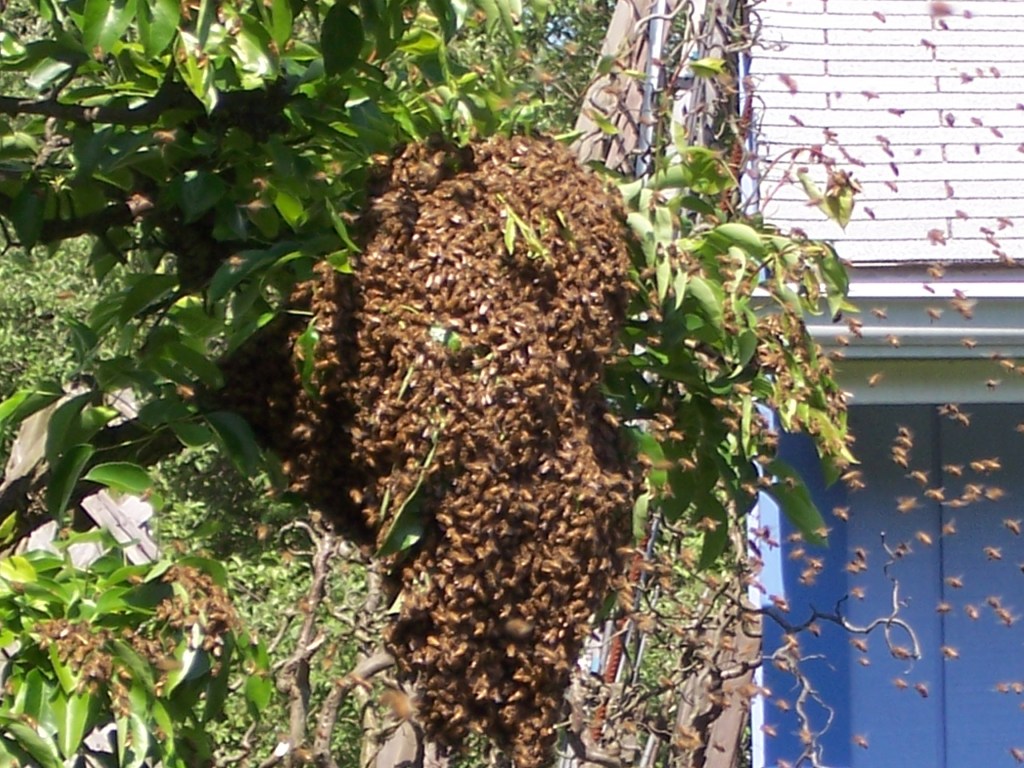
I have three hives and as an experienced beekeeper, I always have extra hive equipment on hand when a swarm appears. This is your chance to increase your bee population for free! The problem is catching the swarm as it can be quite tricky, especially if it is more than 10 feet off the ground.

Starter colonies of honey bees are expensive to purchase (about $225 each), so when a swarm emerges from a newly installed or established hive, you watch your honey harvest evaporate into thin air. The hive will leave, taking at least a third to half of the population along with a newly produced queen and move somewhere else, and your chances of getting a honey crop will evaporate because most of the hive has been removed. gone. The remaining hive with the old queen usually does not retain enough worker bees to create a good honey crop. Swarms of bees leave their home with as much honey as they can hold and are immediately ready to begin building comb in their new home.

The swarm may settle low enough to be captured, but they will most likely fly very far away, up to a 60-foot-tall tree, with no chance of forming a new colony. Their chances of surviving in the wild are around 20%. The remaining bees make up a much smaller population and have little chance of producing excess honey for the current year’s crop, but they have a good chance of surviving the winter and producing a honey crop next year.
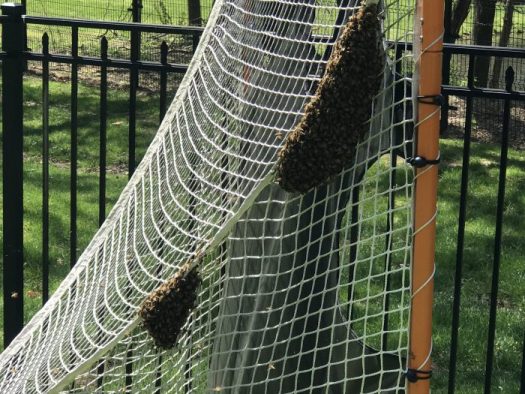
I once had a swarm in a nearby tree and I simply climbed a ladder, cut the branch and carried it down the ladder with all the bees attached and threw them into the hive box. The key is to get the queen into the hive box and all the workers will automatically follow her. The bees have imprinted their pheromones and will follow her wherever she goes.

Queen Cups
Before the swarm leaves the original hive, the queen lays eggs in queen cups, or larger cells that can house the larger growing queen larvae. After the swarm leaves with the old queen, new queens will emerge from the queen cups and if several emerge, they will fight to the death, until the strongest, and usually the first to emerge, emerges victorious.
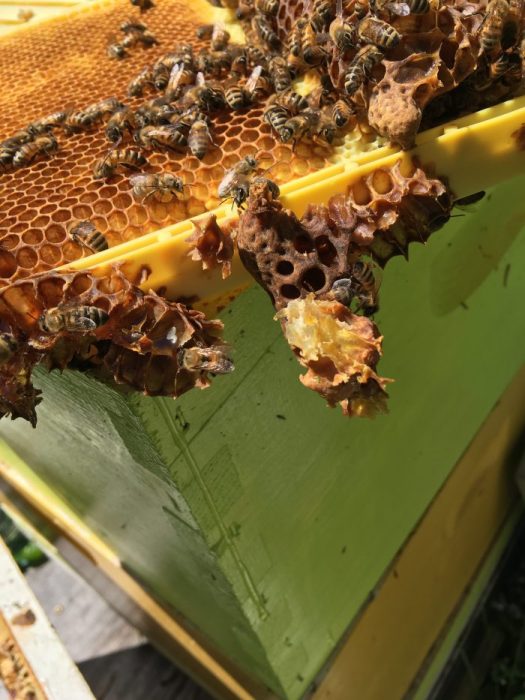
The queens are too heavy to fly long distances, so the swarm usually forms on a nearby structure or tree branch with the queen in the center, and the scout bees will begin looking for new homes. They group together in the chosen location for a few hours or a few days, until the scout bees determine where the final nest will be. Since I am on the swarm contact list for my area, I receive many frantic calls from concerned homeowners who have a swarm in a nearby bush, tree or other structure. I usually ask them to send me a photo of the swarm and give me a brief description of how accessible it will be before I commit to capturing it. But I have gathered some nice swarms of owners who are happy to get rid of them!

My most recent swarm was the largest I have ever encountered. I think there were at least 10,000 bees in the group and they initially formed into two different groups and then merged into one.
The first video is of the swarm just forming. the second shows the swarm beginning to settle in a tree. The third shows that the swarm split into two places on the same tree. The fourth, the two swarms merged into one on the lower branch and I cut off the entire branch they formed on. The swarm weighed over 30 pounds! I took the entire branch to their new home and shook them down. The last video is 5 hours later, where they are settling into their new home. I have a new hive!
Video of the swarm just forming:
Once the hive is set up, the virgin queen will go on her mating flights where she will mate with up to 12-15 male drone bees. By mating with many drones, you increase the genetic diversity of the colony, which is important for colony productivity and disease resistance. After mating, a young, healthy queen will begin laying eggs in the comb within three days, until 2,000 eggs per day to increase the population. A queen can live up to seven years, but is usually replaced sooner as her egg laying declines.
I’ll open the hive in a couple of weeks to see if all goes well and at that time I’ll expect to see some covered broods.
